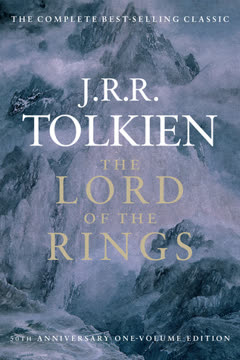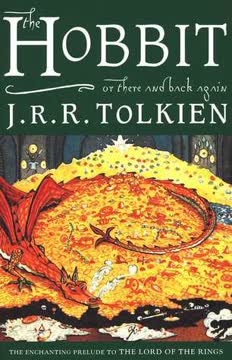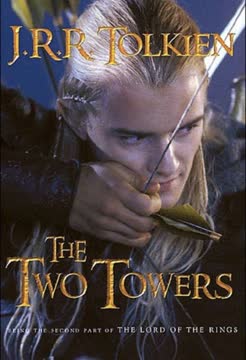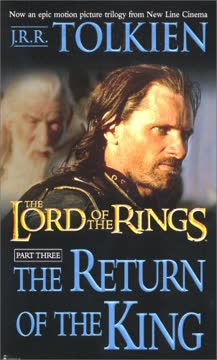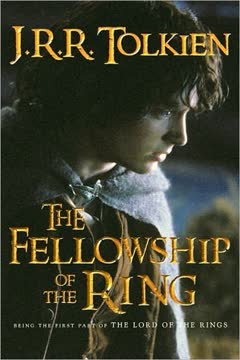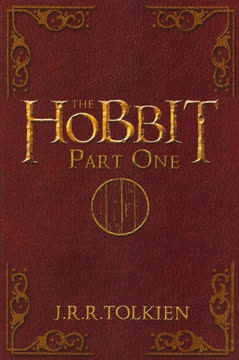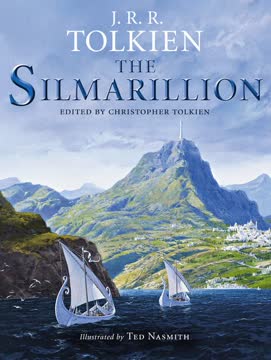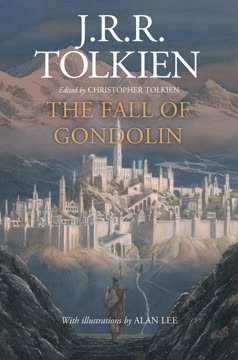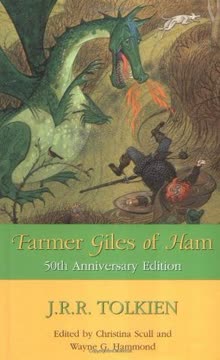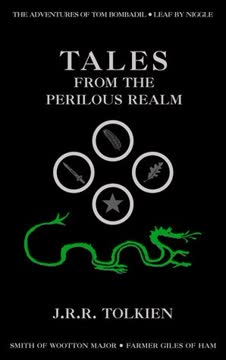Plot Summary
Shadows Over the Shire
The story opens in the peaceful Shire, where hobbits live simple, contented lives. Bilbo Baggins, eccentric and wealthy, plans a grand birthday party, but his possession of a mysterious ring has preserved his youth and drawn the attention of the wizard Gandalf. Gandalf discovers the ring is the One Ring, forged by the Dark Lord Sauron to dominate Middle-earth. Sauron's power is rising again in Mordor, and his servants, the Nazgûl, are searching for the Ring. Bilbo leaves the Shire, passing the Ring to his heir, Frodo. Frodo, with his loyal friends Sam, Merry, and Pippin, is forced to flee when the Ringwraiths close in. Their journey begins with uncertainty, as the shadow of evil stretches even to the Shire's borders.
The Fellowship Forms
Frodo and his companions are joined by Aragorn, a mysterious ranger, and after many perils, reach Rivendell. There, a council of Elves, Men, Dwarves, and Gandalf reveals the Ring's history and the threat Sauron poses. The only hope is to destroy the Ring in the fires of Mount Doom. A Fellowship is formed: Frodo, Sam, Merry, Pippin, Aragorn, Gandalf, Legolas the Elf, Gimli the Dwarf, and Boromir of Gondor. They set out on a quest fraught with danger, pursued by Sauron's forces and the treacherous Saruman, a corrupted wizard.
Perilous Paths Chosen
The Fellowship faces the harsh winter of Caradhras and is forced to enter the Mines of Moria, where they are attacked by orcs and a Balrog, an ancient demon. Gandalf falls into the abyss with the Balrog, sacrificing himself so the others can escape. The remaining members find refuge in the enchanted realm of Lothlórien, where Lady Galadriel offers counsel and gifts. The company travels down the Anduin River, but the Ring's influence grows, and Boromir tries to take it from Frodo. The Fellowship is broken: Frodo and Sam set out alone for Mordor, Merry and Pippin are captured by orcs, and Aragorn, Legolas, and Gimli pursue their captors.
The Ring's Corruption
As Frodo and Sam journey into the wild, they are joined by Gollum, the Ring's former bearer, who becomes their guide. Gollum's mind is twisted by the Ring's power, torn between loyalty and treachery. Meanwhile, Saruman's armies ravage Rohan, and King Théoden is freed from Saruman's influence by Gandalf, who has returned, transformed as Gandalf the White. The Rohirrim, with Aragorn and his companions, defend Helm's Deep against Saruman's forces. Merry and Pippin, with the Ents, lead an assault on Isengard, toppling Saruman's power. The Ring's corruption is ever-present, as even the wise and strong are tempted by its promise of power.
The Breaking of Fellowship
The Fellowship's members are scattered. Frodo and Sam, guided by Gollum, cross the Dead Marshes and approach Mordor. Aragorn, Legolas, and Gimli pursue the orcs, join forces with Rohan, and fight in great battles. Merry and Pippin inspire the Ents to attack Isengard. Gandalf confronts Saruman, who is left powerless. The Ring's burden grows heavier for Frodo, and Gollum leads them to the lair of Shelob, a monstrous spider. Frodo is captured, and Sam, believing him dead, takes up the Ring to continue the quest.
War in the West
Sauron's armies besiege Minas Tirith, capital of Gondor. Gandalf and Pippin arrive to aid the city, while Aragorn seeks the aid of the Dead to fulfill an ancient oath. Rohan rides to Gondor's aid, and the Battle of the Pelennor Fields rages. King Théoden falls, Éowyn and Merry slay the Witch-king, and Aragorn arrives with reinforcements. The city is saved, but at great cost. The leaders of the West resolve to march on the Black Gate, drawing Sauron's gaze away from Frodo and Sam, who struggle onward in Mordor.
The Return of the King
Aragorn is revealed as the heir of Isildur and is crowned King Elessar of Gondor. He brings healing to the wounded and unites the realms of Men. Faramir and Éowyn find love and healing. The armies of the West march to the Black Gate, challenging Sauron and giving Frodo and Sam their only chance to reach Mount Doom. The age of Men dawns, as the Elves and other ancient peoples prepare to depart Middle-earth.
The Road to Mordor
Frodo and Sam, disguised as orcs, traverse the desolation of Mordor. The land is barren, filled with Sauron's armies and watchful eyes. The Ring's weight nearly breaks Frodo, and Sam's loyalty is all that sustains them. Gollum, driven by obsession, stalks them. The journey is a test of endurance, hope, and will, as the hobbits inch closer to Mount Doom, the only place where the Ring can be destroyed.
The Land of Shadow
The final approach to Mount Doom is a nightmare of exhaustion, thirst, and fear. Frodo is nearly overcome by the Ring's power, and Sam must carry him. Gollum attacks, and in the struggle, bites off Frodo's finger and seizes the Ring. In his triumph, Gollum falls into the fire, destroying the Ring. Sauron's power collapses, Barad-dûr falls, and the Shadow is lifted from the world. Frodo and Sam are rescued by the Eagles as Mordor erupts in ruin.
The End of All Things
The victors celebrate, and Aragorn is crowned king. The hobbits are honored for their deeds. The Elves, Dwarves, and Men begin to heal the wounds of war. Frodo and Sam return to the Shire, but Frodo is forever changed by his ordeal. The Shire has suffered under Saruman's malice, and the hobbits must fight to restore it. Peace returns, but Frodo's wounds do not heal.
The Scouring of the Shire
The hobbits find the Shire under the control of ruffians led by Saruman (Sharkey) and Lotho Sackville-Baggins. The land is scarred, trees cut, and hobbits oppressed. Frodo, Sam, Merry, and Pippin rally the Shire, overthrow the ruffians, and confront Saruman, who is killed by Wormtongue. The Shire is restored, but Frodo cannot find peace. Sam marries Rosie and starts a family, while Frodo's pain lingers.
The Passing of the Age
Frodo, bearing wounds that will not heal, is granted passage to the Undying Lands with Gandalf, Bilbo, and the Elves. Sam, Merry, and Pippin return to the Shire, changed by their journey. The age of Elves and magic ends, and the age of Men begins. The story closes with Sam returning home, content in the knowledge that the world has been saved, though at great personal cost.
Characters
Frodo Baggins
Frodo is a gentle, thoughtful hobbit who inherits the One Ring from Bilbo. Chosen by fate and friendship, he becomes the Ring-bearer, tasked with destroying the Ring in Mount Doom. The journey tests his endurance, will, and morality, as the Ring's power nearly consumes him. Frodo is marked by compassion, often showing mercy to Gollum and even Saruman. His psychological journey is one of increasing burden and alienation; he is forever changed, unable to fully return to the innocence of the Shire. Frodo's story is one of sacrifice, endurance, and the limits of heroism.
Samwise Gamgee
Sam is Frodo's gardener and closest friend, embodying loyalty, humility, and resilience. He is the emotional anchor of the quest, often carrying Frodo physically and spiritually. Sam's love for Frodo and the Shire gives him strength to resist the Ring's temptation. He is practical, brave, and resourceful, representing the power of ordinary goodness. Sam's journey is one of growth from humble servant to hero, and ultimately, he finds healing and happiness in family and home.
Gandalf
Gandalf is a Maia, a spirit sent to aid Middle-earth, disguised as an old man. He is wise, compassionate, and shrewd, orchestrating the resistance against Sauron. Gandalf's fall in Moria and return as Gandalf the White symbolize death and rebirth, and his role shifts from guide to leader. He is a catalyst for change, inspiring courage and unity. Gandalf's psychological depth lies in his humility and understanding of power's dangers; he refuses the Ring, knowing its corrupting influence.
Aragorn (Strider, Elessar)
Aragorn is the last heir of Isildur, raised in obscurity. He is a skilled ranger, warrior, and healer, torn between his destiny and self-doubt. Aragorn's journey is one of accepting his heritage and uniting the Free Peoples. He is noble, self-sacrificing, and inspires loyalty. His love for Arwen and his humility set him apart from other kings. Aragorn's psychological arc is about embracing responsibility and hope, culminating in his coronation and the restoration of the kingdom.
Gollum (Sméagol)
Gollum is a hobbit-like creature corrupted by the Ring, split between his original self (Sméagol) and his darker side (Gollum). He is cunning, pitiable, and obsessed with the Ring ("my precious"). Gollum's relationship with Frodo is complex—he is both guide and betrayer, evoking Frodo's empathy and Sam's suspicion. His psychological torment and addiction to the Ring drive the plot, and his final act—seizing the Ring and falling into the fire—unwittingly saves Middle-earth.
Sam, Merry, and Pippin
Merry and Pippin, Frodo's cousins, begin as lighthearted, mischievous hobbits but grow into leaders and warriors. Merry helps slay the Witch-king; Pippin saves Faramir and serves Gondor. Their psychological development is marked by loss of innocence, courage, and a deepening sense of responsibility. Together with Sam, they represent the resilience and adaptability of the hobbits.
Legolas
Legolas is an Elf of Mirkwood, skilled in archery and attuned to nature. He is graceful, perceptive, and forms a close friendship with Gimli, overcoming ancient enmity between Elves and Dwarves. Legolas's perspective brings a sense of wonder and melancholy, as he witnesses the fading of his people's age.
Gimli
Gimli is a Dwarf of Erebor, brave and stubborn. His friendship with Legolas is a key symbol of reconciliation. Gimli's pride in his heritage and his love for the Glittering Caves show the Dwarves' depth beyond mere warriors. He is steadfast, humorous, and values honor and loyalty.
Saruman
Saruman was once the chief of the wizards, but his lust for power and knowledge leads him to betray the Free Peoples. He becomes a puppet of Sauron, unleashing war and industrial ruin. Saruman's psychological arc is a warning about pride, the seduction of power, and the self-destruction of betrayal. His end is ignominious, killed by his own servant, Wormtongue.
Sauron
Sauron is the Dark Lord, a Maia corrupted by Morgoth, who seeks to enslave Middle-earth through the Ring. He is never seen directly, but his presence is felt as a pervasive, malignant will. Sauron represents the psychological force of domination, fear, and despair. His defeat comes not through direct confrontation, but through the humility and resilience of the smallest and least likely.
Plot Devices
The One Ring
The Ring is the central plot device, representing absolute power and its corrupting influence. It tempts all who encounter it, revealing their desires and weaknesses. The Ring's power isolates and burdens Frodo, driving the narrative and testing the characters' morality. Its destruction is the only way to defeat Sauron, but it can only be destroyed through an act of grace—Gollum's intervention—rather than willpower alone.
The Fellowship
The formation and breaking of the Fellowship structure the narrative, allowing for multiple storylines and perspectives. The group's diversity—hobbits, Men, Elf, Dwarf, wizard—symbolizes the need for cooperation across differences. The breaking of the Fellowship leads to parallel quests, each contributing to the ultimate victory.
The Journey
The journey motif is both literal and symbolic. The characters traverse vast, perilous landscapes, mirroring their internal struggles. The journey tests and transforms them, stripping away innocence and forging new identities. The motif of "the road" recurs, emphasizing fate, choice, and the unknown.
Temptation and Mercy
Characters are repeatedly tested by the Ring and by opportunities for vengeance or power. Frodo's mercy to Gollum, Bilbo's earlier pity, and Sam's restraint are crucial; these acts of compassion ultimately lead to the Ring's destruction. The narrative structure uses foreshadowing and echoes to reinforce the theme that mercy, not might, is the key to victory.
War and the Passing of Ages
The War of the Ring provides a backdrop of escalating conflict, with battles at Helm's Deep, Pelennor Fields, and the Black Gate. The narrative uses these events to mark the end of the Elves' and other ancient peoples' dominion, and the beginning of the age of Men. The structure interweaves personal and epic scales, showing how small acts affect the fate of the world.
Parallel Storylines
After the breaking of the Fellowship, the story splits into multiple threads—Frodo and Sam's quest, the war in the West, Merry and Pippin's adventures. The narrative alternates between these, building suspense and offering different perspectives on the same events. This device allows for a rich, layered exploration of the world and its peoples.
The Scouring of the Shire
The hobbits' return to a corrupted Shire brings the epic home, showing that evil can take root anywhere. The Scouring is both a literal and symbolic cleansing, and a commentary on the need for vigilance and courage in everyday life. It also highlights the psychological cost of the journey, as Frodo cannot fully heal.
The Passing of the Ring-bearers
The departure of Frodo, Bilbo, and the Elves to the Undying Lands provides a bittersweet resolution. It acknowledges that some wounds cannot be healed in this world, and that the end of one age is the beginning of another. The narrative structure uses this device to offer both closure and a sense of ongoing history.
Analysis
The Lord of the Rings endures as a foundational work of modern fantasy because it weaves together epic adventure, deep psychological insight, and a profound moral vision. Tolkien's world is meticulously constructed, but its true power lies in its exploration of the human (and hobbit) condition. The Ring is a symbol of the temptation to dominate, and the story insists that true heroism lies not in strength or wisdom, but in humility, mercy, and resilience. The narrative structure, with its interlaced storylines and shifting perspectives, mirrors the complexity of history and the interconnectedness of all peoples. The journey motif allows for transformation, but also acknowledges loss and the impossibility of returning unchanged. The Scouring of the Shire grounds the epic in the everyday, reminding readers that evil must be resisted at home as well
Last updated:
FAQ
```markdown
Synopsis & Basic Details
What is The Lord of the Rings about?
- A Quest Against Absolute Evil: The Lord of the Rings chronicles the perilous journey of Frodo Baggins, a hobbit, who inherits a seemingly innocuous magic ring from his eccentric uncle, Bilbo. This ring is, in fact, the One Ring, an artifact of immense power forged by the Dark Lord Sauron to dominate all of Middle-earth.
- The Fellowship's Formation: To prevent Sauron from reclaiming the Ring and plunging the world into eternal darkness, a diverse fellowship is formed at the Council of Elrond. This group, comprising hobbits, Men, an Elf, a Dwarf, and a Wizard, embarks on a desperate quest to destroy the Ring in the only place it can be unmade: the fires of Mount Doom in Mordor.
- Sacrifice and the Dawn of a New Age: The narrative follows the Fellowship's trials, their eventual breaking, and the individual journeys of its members as they fight against Sauron's growing power. It culminates in the Ring's destruction, Sauron's defeat, and the restoration of Aragorn, the rightful king, ushering in a new age for Middle-earth, albeit one marked by the fading of Elves and the lingering wounds of war.
Why should I read The Lord of the Rings?
- Immersive World-Building: Tolkien's masterpiece offers an unparalleled depth of world-building, from its intricate languages and detailed histories to its rich mythologies and diverse cultures. Readers are transported to a Middle-earth that feels ancient and real, fostering a profound sense of immersion.
- Profound Thematic Exploration: Beyond the adventure, the book delves into universal themes such as the corrupting nature of power, the importance of friendship and loyalty, the resilience of the ordinary, and the bittersweet beauty of sacrifice. It's a story that resonates deeply with the human condition.
- Enduring Literary Influence: As a foundational work of modern fantasy, The Lord of the Rings has influenced countless authors, artists, and filmmakers. Reading it provides insight into the origins of many tropes and narrative structures prevalent in the genre today, offering a richer appreciation for its legacy.
What is the background of The Lord of the Rings?
- Deep Mythological Roots: The story is set in the Third Age of Middle-earth, a world with a vast, ancient history detailed in Tolkien's other works like The Silmarillion. This background includes the creation myths, the rise and fall of ancient kingdoms, and the long struggle against primordial evil, providing a rich tapestry against which the events of the Ring War unfold.
- Linguistic Inspiration: Tolkien, a philologist, initially created the Elvish languages (Quenya and Sindarin) for his own enjoyment, and then built the world of Middle-earth around them to give them a place and history. This linguistic foundation lends an extraordinary authenticity and depth to the names, songs, and lore within the narrative.
- Post-WWI Reflections: While Tolkien explicitly denied allegory, his experiences in World War I and observations of industrialization deeply influenced the story's themes. The devastation of the Shire, the industrial blight of Isengard, and the pervasive sense of loss and fading beauty reflect a profound concern for the impact of war and unchecked technological progress on nature and traditional ways of life.
What are the most memorable quotes in The Lord of the Rings?
- "All that is gold does not glitter, / Not all those who wander are lost; / The old that is strong does not wither, / Deep roots are not reached by the frost.": This iconic verse, from Gandalf's letter to Frodo, serves as a crucial piece of foreshadowing and character introduction for Aragorn. It encapsulates the theme of hidden nobility and the deceptive nature of appearances, urging readers and characters alike to look beyond the surface.
- "I wish it need not have happened in my time," said Frodo. "So do I," said Gandalf, "and so do all who live to see such times. But that is not for them to decide. All we have to decide is what to do with the time that is given us.": This exchange between Frodo and Gandalf in "The Shadow of the Past" is a powerful meditation on destiny, responsibility, and agency. It highlights the universal human desire to avoid hardship, yet underscores the moral imperative to act courageously within one's given circumstances, a central theme of the entire saga.
- "There's some good in this world, Mr. Frodo, and it's worth fighting for.": Uttered by Samwise Gamgee, this simple yet profound statement encapsulates the core message of hope and perseverance in the face of overwhelming evil. It reflects Sam's unwavering loyalty and his deep love for the simple beauties of life, which he believes are worth defending, even when all seems lost.
What writing style, narrative choices, and literary techniques does J.R.R. Tolkien use?
- Archaic and Formal Language: Tolkien employs a rich, often archaic vocabulary and formal sentence structures, especially in descriptions and the speech of noble characters or ancient beings. This choice imbues the narrative with a mythic, timeless quality, evoking the sense of reading an ancient legend or historical account, as seen in the elevated prose of Elrond's speeches.
- Omniscient and Shifting Perspective: The narrative primarily uses an omniscient third-person perspective, but frequently shifts its focus, particularly after the Fellowship breaks. This allows for a comprehensive view of the unfolding war, contrasting the intimate, often internal struggles of Frodo and Sam with the grander, external conflicts involving Aragorn, Gandalf, and the armies of Men, Elves, and Dwarves.
- Extensive Use of Poetry and Song: Throughout the text, Tolkien intersperses numerous poems, songs, and riddles, which serve multiple functions: they enrich the world-building by providing historical context, cultural insights, and character depth; they break up the prose, offering moments of reflection or emotional release; and they often foreshadow future events or reveal hidden truths, such as Bilbo's "Road goes ever on" poem or the Lay of Lúthien.
Hidden Details & Subtle Connections
What are some minor details that add significant meaning?
- The Significance of Pipe-weed: Beyond a simple hobbit pleasure, pipe-weed is revealed in the Prologue and later by Merry to be a plant native to Gondor, brought north by the Men of Westernesse. This seemingly trivial detail subtly links the Shire to the ancient history of Men and the wider world, foreshadowing the hobbits' eventual involvement in larger events and highlighting the unexpected origins of common things.
- The Elven-cloaks' Camouflage: The grey cloaks given by Galadriel are not merely warm garments; they possess a subtle magic that allows the wearer to blend seamlessly with their surroundings. This detail, initially presented as a practical gift, symbolizes the Elves' deep connection to nature and their mastery of subtle, non-aggressive forms of power, contrasting with Sauron's overt might.
- The Names of the Days and Months: Appendix D reveals that the Shire's calendar and weekday names are translations of older Dúnedain and Elvish terms, often with forgotten meanings. This deep linguistic layering underscores the ancient lineage of Middle-earth's cultures and the hobbits' unconscious connection to a grander past, even in their seemingly isolated existence.
What are some subtle foreshadowing and callbacks?
- Bilbo's "Thin and Stretched" Feeling: In "A Long-Expected Party," Bilbo describes feeling "all thin, sort of stretched, if you know what I mean: like butter that has been scraped over too much bread." This seemingly whimsical complaint subtly foreshadows the Ring's insidious effect, which drains its bearer's vitality and makes them feel insubstantial, a fate Frodo later experiences more acutely.
- Sam's Oliphaunt Rhyme: Sam's recitation of the "Oliphaunt" rhyme in Ithilien, initially a moment of comic relief, subtly foreshadows the later appearance of the Mûmakil in the Battle of the Pelennor Fields. It transforms a childhood fancy into a terrifying reality, emphasizing the vastness and unexpected dangers of the world beyond the Shire.
- The Barrow-blades' True Purpose: The daggers given to the hobbits by Tom Bombadil, taken from the Barrow-downs, are revealed by Gandalf to be "blades wrought by our own kindred in the North in the deep past." Merry's blade, in particular, proves to be a "troll's bane" and later, crucially, the only weapon capable of wounding the Witch-king, fulfilling an ancient prophecy and highlighting the enduring power of forgotten artifacts.
What are some unexpected character connections?
- Aragorn's Hidden Lineage and the Elfstone: Aragorn's true identity as the heir of Isildur is a central reveal, but the depth of his connection to the Elves is often overlooked. He is not only fostered by Elrond but is also betrothed to Arwen, Elrond's daughter, making him a descendant of Lúthien and Beren. The green Elfstone, Elessar, given to him by Galadriel, is a token of this heritage and a symbol of his future kingship, linking him directly to the ancient Elven-kings.
- Gimli and Galadriel's Unlikely Bond: The initial animosity between Gimli and Legolas, reflecting the ancient feud between Elves and Dwarves, is famously overcome. However, Gimli's profound reverence and love for Lady Galadriel, culminating in his request for a strand of her hair, is a truly unexpected connection. This bond transcends racial prejudice and symbolizes the healing of old wounds, foreshadowing Gimli's unique fate of sailing to the Undying Lands.
- Tom Bombadil's Ancient Knowledge: Tom Bombadil's seemingly whimsical nature belies his immense age and unique connection to Middle-earth. His casual familiarity with the "River-woman's daughter" (Goldberry) and his deep knowledge of the Old Forest and Barrow-wights hint at a primordial existence far predating the Elves and Men. His immunity to the Ring's power further emphasizes his singular, almost elemental, connection to the land itself, making him an enigmatic figure outside the conventional power structures.
Who are the most significant supporting characters?
- Tom Bombadil: Though he appears briefly, Tom Bombadil is profoundly significant as a character who exists outside the power struggles of Middle-earth. His immunity to the Ring's influence and his ancient, joyful connection to nature offer a glimpse of a different kind of power—one of pure being and harmony, untouched by the world's conflicts. He represents a primal, untamed spirit of the land.
- Lady Galadriel: As one of the most powerful and ancient Elves remaining in Middle-earth, Galadriel serves as a crucial source of wisdom, comfort, and subtle aid to the Fellowship. Her temptation by the Ring and her subsequent rejection of it highlight the immense moral strength required to resist absolute power, while her gifts, particularly the Phial, prove vital to Frodo's quest.
- Faramir: Boromir's younger brother, Faramir, stands out as a man of Gondor who resists the Ring's temptation, demonstrating a rare wisdom and compassion. His encounter with Frodo and Sam, and his understanding of the Ring's true nature, provide a stark contrast to his brother's fall and underscore the theme that true strength lies not in wielding power, but in refusing it.
Psychological, Emotional, & Relational Analysis
What are some unspoken motivations of the characters?
- Bilbo's Lingering Attachment to the Ring: While Bilbo outwardly claims to be "thin, sort of stretched" and desires a permanent holiday, his deep-seated reluctance to part with the Ring, calling it "My Precious" in a manner disturbingly similar to Gollum, reveals an unspoken, almost subconscious addiction. His "joke" at the party is a thinly veiled attempt to escape the Ring's hold, but his struggle with Gandalf shows the profound psychological grip it still has on him.
- Aragorn's Self-Doubt and Burden of Kingship: Aragorn's reluctance to claim his throne is often attributed to humility, but it also stems from a deep-seated fear of failure and the weight of his lineage. His long years as Strider, a wandering Ranger, allowed him to avoid the direct responsibilities of kingship. His internal struggle is not just about proving his worth, but about overcoming the historical failures of his ancestors, particularly Isildur, and the fear that he might succumb to the same temptations.
- Denethor's Despair and Pride: Denethor's seemingly irrational actions, such as his favoritism towards Boromir and his eventual madness, are driven by a profound, unspoken despair. He sees the inevitable decline of Gondor and the Age of Men, and his pride prevents him from accepting help or hope from outside sources, especially Gandalf, whom he views as a rival. His use of the palantír, a desperate attempt to gain knowledge and control, ultimately feeds his despair, leading to his tragic end.
What psychological complexities do the characters exhibit?
- Frodo's Empathy and the Burden of Pity: Frodo's decision to spare Gollum, echoing Bilbo's earlier act of pity, is a pivotal moment that highlights his deep empathy. This compassion, however, becomes a psychological burden, as he grapples with the moral implications of his choices and the constant threat posed by Gollum's treachery. His internal conflict between mercy and self-preservation is a central psychological complexity, demonstrating that even good intentions can lead to unforeseen perils.
- Sam's Simple Loyalty vs. Growing Wisdom: Sam's character evolves from a simple, unquestioning servant to a figure of profound wisdom and resilience. His initial "hobbit-sense" and distrust of the unknown are gradually tempered by his unwavering loyalty to Frodo and his experiences in the wider world. His internal monologues, particularly in Mordor, reveal a growing understanding of the larger stakes and a deep, unarticulated love for his master, showcasing a complex blend of simplicity and profound moral strength.
- Saruman's Intellectual Arrogance and Isolation: Saruman's fall is a psychological study in the dangers of intellectual pride and the pursuit of knowledge for its own sake. His belief that he can control power, rather than be controlled by it, leads him to isolate himself from his peers and ultimately from reality. His "mind of metal and wheels" symbolizes a detachment from living things and a descent into a sterile, destructive form of wisdom, culminating in his pathetic end as a "beggar in the wilderness."
What are the major emotional turning points?
- Bilbo's Relinquishment of the Ring: The scene where Bilbo finally gives up the Ring, after a fierce internal struggle and Gandalf's stern intervention, is a major emotional turning point. It marks the first clear demonstration of the Ring's corrupting power and the immense difficulty of letting go of absolute control, setting the stage for Frodo's even greater struggle.
- The Breaking of the Fellowship at Parth Galen: Boromir's attempt to seize the Ring from Frodo, followed by his valiant but ultimately fatal defense of Merry and Pippin, shatters the Fellowship and forces Frodo to continue alone with Sam. This event is a profound emotional blow, marking the loss of innocence and the realization of the Ring's divisive power, forcing the remaining members to confront their individual destinies.
- Éowyn's Defiance of the Witch-king: Éowyn's revelation as Dernhelm and her slaying of the Witch-king on the Pelennor Fields is a powerful emotional climax. Her act of defiance, driven by love and despair, shatters the ancient prophecy that "no living man may hinder me." This moment is a triumph of courage and will, not just for Éowyn, but for all who felt trapped by fate and the overwhelming power of evil.
How do relationship dynamics evolve?
- Gimli and Legolas: From Ancient Feud to Deep Friendship: The initial tension between Gimli and Legolas, rooted in centuries of Elvish-Dwarvish animosity, gradually transforms into one of the most profound friendships in the story. Their shared perils, mutual respect for each other's skills, and particularly Gimli's reverence for Galadriel, forge an unbreakable bond that transcends racial divides, symbolizing hope for reconciliation in Middle-earth.
- Frodo and Sam: Master and Servant to Co-dependant Companions: Their relationship evolves from a traditional master-servant dynamic to one of deep, almost symbiotic, companionship. Sam's unwavering loyalty and practical support become indispensable to Frodo, especially as the Ring's burden grows. Frodo, in turn, relies on Sam not just for physical aid but for emotional and moral strength, highlighting how their shared ordeal forges an unbreakable bond of love and mutual dependence.
- Aragorn and Théoden: From Distrust to Mutual Respect: Théoden, initially under Saruman's sway and distrustful of outsiders, views Aragorn with suspicion. However, through Gandalf's intervention and Aragorn's actions in battle, Théoden comes to recognize Aragorn's true nobility and wisdom. Their relationship transforms into one of mutual respect and alliance, symbolizing the rekindling of ancient bonds between the realms of Men and the hope for a united front against evil.
Interpretation & Debate
Which parts of the story remain ambiguous or open-ended?
- The Nature and Origin of Tom Bombadil: Tom Bombadil remains one of the most enigmatic characters, defying easy categorization. His power over the Ring, his ancientness ("Eldest, that's what I am"), and his detachment from the larger conflict leave his true nature ambiguous. He is neither Elf, Man, nor Dwarf, and his role seems to be that of a primal spirit of the land, a force of nature rather than a participant in the cosmic struggle, prompting endless reader speculation about his identity and purpose.
- The Fate of the Entwives: Treebeard's lament for the lost Entwives, who "did not die" but were "lost" after crossing the Great River to tend their gardens, leaves their ultimate fate unresolved. This ambiguity adds a layer of melancholy to the Ents' story and raises questions about the lasting impact of war and industrialization on nature. Their potential return, "when we have both lost all that we now have," suggests a cyclical view of history and a hope for future reconciliation that remains unfulfilled within the narrative.
- The Long-Term Healing of Frodo's Wounds: While Frodo is physically healed in Rivendell and after the Ring's destruction, his spiritual and psychological wounds are explicitly stated to be "not wholly cured." His departure to the Undying Lands, a place of healing, leaves the exact nature and duration of his recovery open to interpretation. This ambiguity acknowledges the lasting trauma of profound sacrifice and suggests that some burdens cannot be fully shed within the mortal world, even after victory.
What are some debatable, controversial scenes or moments in The Lord of the Rings?
- Gandalf's Delay in Reaching Frodo: Gandalf's prolonged absence after instructing Frodo to leave the Shire, leading to Frodo's perilous encounters with the Nazgûl, is a point of contention. While Gandalf explains he was imprisoned by Saruman, some readers question whether his priorities or judgment were flawed, or if his delay was a deliberate, albeit risky, part of a larger, unseen plan to test Frodo and the Ring.
- Boromir's Temptation and Death: Boromir's attempt to seize the Ring from Frodo is a deeply debated moment. While it highlights the Ring's corrupting power, some argue that his character arc is too abrupt or that his death, though valiant, is a convenient way to remove a morally compromised character. Others see it as a tragic but realistic portrayal of human fallibility and the immense pressure of the quest.
- The Eagles' Role and Late Intervention: The Eagles' repeated interventions, particularly their rescue of Gandalf from Orthanc and Frodo and Sam from Mount Doom, often spark debate. Critics argue that their power is too deus ex machina, questioning why they don't intervene earlier or more directly in the war. Tolkien's explanation that they are not "taxi services" and act only at specific times, or when commanded, points to their role as agents of a higher power, not mere plot devices.
The Lord of the Rings Ending Explained: How It Ends & What It Means
Review Summary
The Lord of the Rings is widely regarded as a masterpiece of fantasy literature. Readers praise Tolkien's intricate world-building, vivid descriptions, and epic storytelling. The trilogy's themes of good versus evil, friendship, and personal growth resonate deeply with many. While some find the pacing slow and the writing style challenging, most consider it a timeless classic that revolutionized the fantasy genre. The books' impact extends beyond literature, inspiring countless adaptations and influencing popular culture for generations.
Middle Earth Series
Similar Books
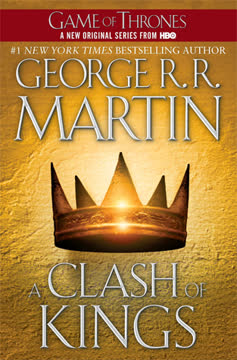
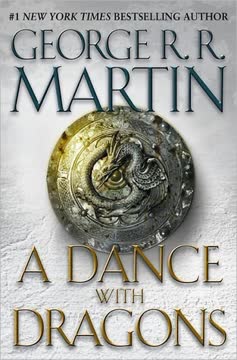
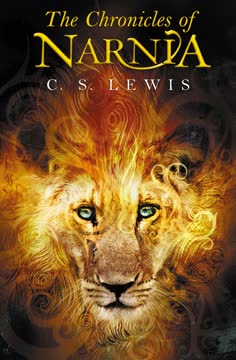
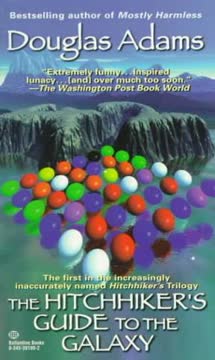
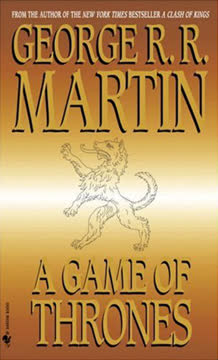
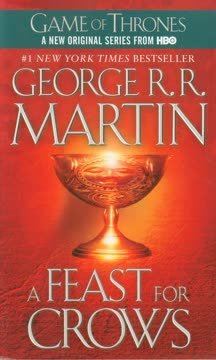
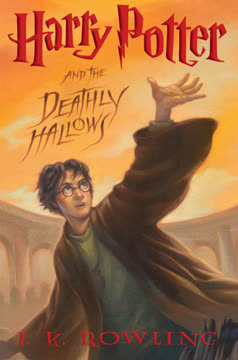
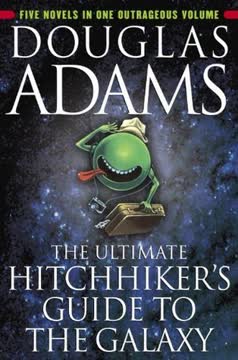
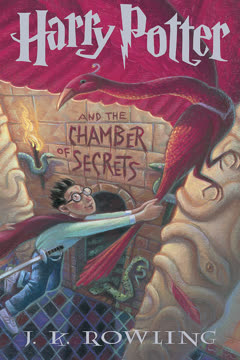

Download PDF
Download EPUB
.epub digital book format is ideal for reading ebooks on phones, tablets, and e-readers.
